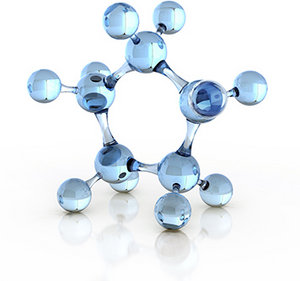In the clinic, we aim to restore healthy patterns of movement for qi that has gotten trapped or misdirected, or may have even collapsed. We may be focused on freeing stagnation, releasing heat or redirecting counterflow qi, but it often comes down to helping re-establish a flow of sorts. Acupuncture is really about this movement, this flow, and shifting whatever might block it.
At the time I first encountered them, information about molecular motors existed in paragraph form in textbooks and in the minds of those researching them. A student could still get a vivid mental picture of innumerable tiny machines, purposefully marching and working at the cellular scale. It was more than enough to astonish, and capture the imagination of someone who'd been thinking about the equally mysterious movements of qi.
One of the most important things motor proteins do is move information. Much of the information within cells is written in the language of chemistry. Proteins, lipids, and carbohydrates are tagged and toted, carrying coded designators of what was happening in their immediate vicinity to the next location. These dispatches are read and responded to like letters from a far off family member: with care and precision.
 Motor proteins do the physical work of transporting the messages by traveling on a set of dedicated rails, shepherding materials and information in a complex dance. Even the rails, the basic infrastructure for messaging, are completely dynamic in cells. They assemble and disassemble as needed, sprouting new lines on which these little motors can whir and ride to where ever their cargo could help.
Motor proteins do the physical work of transporting the messages by traveling on a set of dedicated rails, shepherding materials and information in a complex dance. Even the rails, the basic infrastructure for messaging, are completely dynamic in cells. They assemble and disassemble as needed, sprouting new lines on which these little motors can whir and ride to where ever their cargo could help.
One of my favorite motor proteins to think about is named kinesin. This little machine specializes in moving material from the interior of the cell out to the periphery. For example, receptors bound for the cell surface are made in the depths of an organelle called the Golgi body. During the manufacturing process, new receptors are embedded into a patch of membrane.
When this section of membrane is fully loaded and ready to move to the surface of the cell, it pinches off and curls into a hollow ball called a vesicle, studded with newly made components. Kinesin then captures the vesicle and walks it to the cell's outer membrane, which absorbs and integrates the new parts.
So, if a cell wants to become more sensitive to a certain kind of signal, additional receptors which recognize the signal are generated and kinesin moves them to their functional destination, facing the extracellular environment.
Likewise, if the cell has produced a communication signal, such as a neuropeptide, to be secreted into a synaptic space, kinesin will guide a vesicle full of the neurotransmitter to the correct port from which to release the contents.
By moving both the machinery of "cellular listening" (receptors) and the chemistry of "cellular speaking" (secreted signals), kinesin allows cells to be in conversation with one another.
In this era of smartphones and intense connectivity, we can forget that communication often requires moving material and information from one physical location to another. Our cells remember this, though, and do not forget to do the daily work it takes to keep information flowing.
Molecular motors also do much more than communication. Some types do the physical work of moving muscle fibers so that we can move as we choose. Some crawl along DNA so that it can be read or replicated by other specialized proteins. Some restock every conceivable kind of cellular building material, and others haul back any waste products for recycling. Some organize the complex process of cell division.
Within their world, molecular motors are the postal system, Amazon.com and the burly furniture movers.
For me, it adds something when I learn about the elegance, the faithfulness, the complexity, and the diversity of the players who ensure that movement is possible within any living cell. It adds a bit of appreciation, of more specific gratitude for the opportunity to help guide movement with carefully placed needles.
To lean over a patient's body on the treatment table is to lean over a field of inconceivable motion, each body a thrumming, bustling, working world unto itself. Studying particular cellular components turned out to be one of the ways I could directly appreciate the subtle and robust beauty of life energy.
Reference
Dr. White-Gilbertson began her professional life as an acupuncturist in 2000 after studying at The Midwest College for Oriental Medicine (then The Midwest College for the Study of Oriental Medicine). In 2002, a long standing interest in possible connections between acupuncture and Western biomedicine led her to formally train in molecular biology. She earned a PhD for her work in chemotherapy resistance and programmed cell death as part of a dual degree program which also granted her a Masters in Clinical Research from the Medical University of South Carolina in 2009. In total, Dr. White-Gilbertson spent 10 years researching cancer biology and now works with cancer databases addressing issues of incidence and outcome for this difficult disease. She lives and works in Charleston, SC.



